From The Blog
-
ConnectWise Slash and Grab Flaw Once Again Shows the Value of Input Validation We talk to Huntress About its Impact
Written by Sean KalinichAlthough the news of the infamous ConnectWise flaw which allowed for the creation of admin accounts is a bit cold, it still is one that…Written on Tuesday, 19 March 2024 12:44 in Security Talk Read 594 times Read more...
-
Social Manipulation as a Service – When the Bots on Twitter get their Check marks
Written by Sean KalinichWhen I started DecryptedTech it was to counter all the crap marketing I saw from component makers. I wanted to prove people with a clean…Written on Monday, 04 March 2024 16:17 in Editorials Read 1497 times Read more...
-
To Release or not to Release a PoC or OST That is the Question
Written by Sean KalinichThere is (and always has been) a debate about the ethics and impact of the release of Proof-of-Concept Exploit for an identified vulnerability and Open-Source…Written on Monday, 26 February 2024 13:05 in Security Talk Read 1051 times Read more...
-
There was an Important Lesson Learned in the LockBit Takedown and it was Not About Threat Groups
Written by Sean KalinichIn what could be called a fantastic move, global law enforcement agencies attacked and took down LockBit’s infrastructure. The day of the event was filled…Written on Thursday, 22 February 2024 12:20 in Security Talk Read 901 times Read more...
-
NetSPI’s Offensive Security Offering Leverages Subject Matter Experts to Enhance Pen Testing
Written by Sean KalinichBlack Hat 2023 Las Vegas. The term offensive security has always been an interesting one for me. On the surface is brings to mind reaching…Written on Tuesday, 12 September 2023 17:05 in Security Talk Read 2076 times Read more...
-
Black Kite Looks to Offer a Better View of Risk in a Rapidly Changing Threat Landscape
Written by Sean KalinichBlack Hat 2023 – Las Vegas. Risk is an interesting subject and has many different meanings to many different people. For the most part Risk…Written on Tuesday, 12 September 2023 14:56 in Security Talk Read 1787 times Read more...
-
Microsoft Finally Reveals how they Believe a Consumer Signing Key was Stollen
Written by Sean KalinichIn May of 2023 a few sensitive accounts reported to Microsoft that their environments appeared to be compromised. Due to the nature of these accounts,…Written on Thursday, 07 September 2023 14:40 in Security Talk Read 2059 times Read more...
-
Mandiant Releases a Detailed Look at the Campaign Targeting Barracuda Email Security Gateways, I Take a Look at What this all Might Mean
Written by Sean KalinichThe recent attack that leveraged a 0-Day vulnerability to compromise a number of Barracuda Email Security Gateway appliances (physical and virtual, but not cloud) was…Written on Wednesday, 30 August 2023 16:09 in Security Talk Read 1961 times Read more...
-
Threat Groups Return to Targeting Developers in Recent Software Supply Chain Attacks
Written by Sean KalinichThere is a topic of conversation that really needs to be talked about in the open. It is the danger of developer systems (personal and…Written on Wednesday, 30 August 2023 13:29 in Security Talk Read 1819 times Read more...
Recent Comments
- Sean, this is a fantastic review of a beautiful game. I do agree with you… Written by Jacob 2023-05-19 14:17:50 Jedi Survivor – The Quick, Dirty, and Limited Spoilers Review
- Great post. Very interesting read but is the reality we are currently facing. Written by JP 2023-05-03 02:33:53 The Dangers of AI; I Think I Have Seen this Movie Before
- I was wondering if you have tested the microphone audio frequency for the Asus HS-1000W? Written by Maciej 2020-12-18 14:09:33 Asus HS-1000W wireless headset impresses us in the lab
- Thanks for review. I appreciate hearing from a real pro as opposed to the blogger… Written by Keith 2019-06-18 04:22:36 The Red Hydrogen One, Possibly One of the Most “misunderstood” Phones Out
- Have yet to see the real impact but in the consumer segment, ryzen series are… Written by sushant 2018-12-23 10:12:12 AMD’s 11-year journey to relevance gets an epic finish.
Most Read
- Microsoft Fail - Start Button Back in Windows 8.1 But No Start Menu Written on Thursday, 30 May 2013 15:33 in News Be the first to comment! Read 116466 times Read more...
- We take a look at the NETGEAR ProSafe WNDAP360 Dual-Band Wireless Access Point Written on Saturday, 07 April 2012 00:17 in Pro Storage and Networking Be the first to comment! Read 87368 times Read more...
- Synology DS1512+ Five-Bay NAS Performance Review Written on Tuesday, 12 June 2012 20:31 in Pro Storage and Networking Be the first to comment! Read 81916 times Read more...
- Gigabyte G1.Sniper M3 Design And Feature Review Written on Sunday, 19 August 2012 22:35 in Enthusiast Motherboards Be the first to comment! Read 80246 times Read more...
- The Asus P8Z77-M Pro Brings Exceptional Performance and Value to the Lab Written on Monday, 23 April 2012 13:02 in Consumer Motherboards Be the first to comment! Read 70872 times Read more...
Displaying items by tag: Kingston
Kingston's DataTraveler Elite 3.0 32GB Flash Drive Gets Run Through the Lab
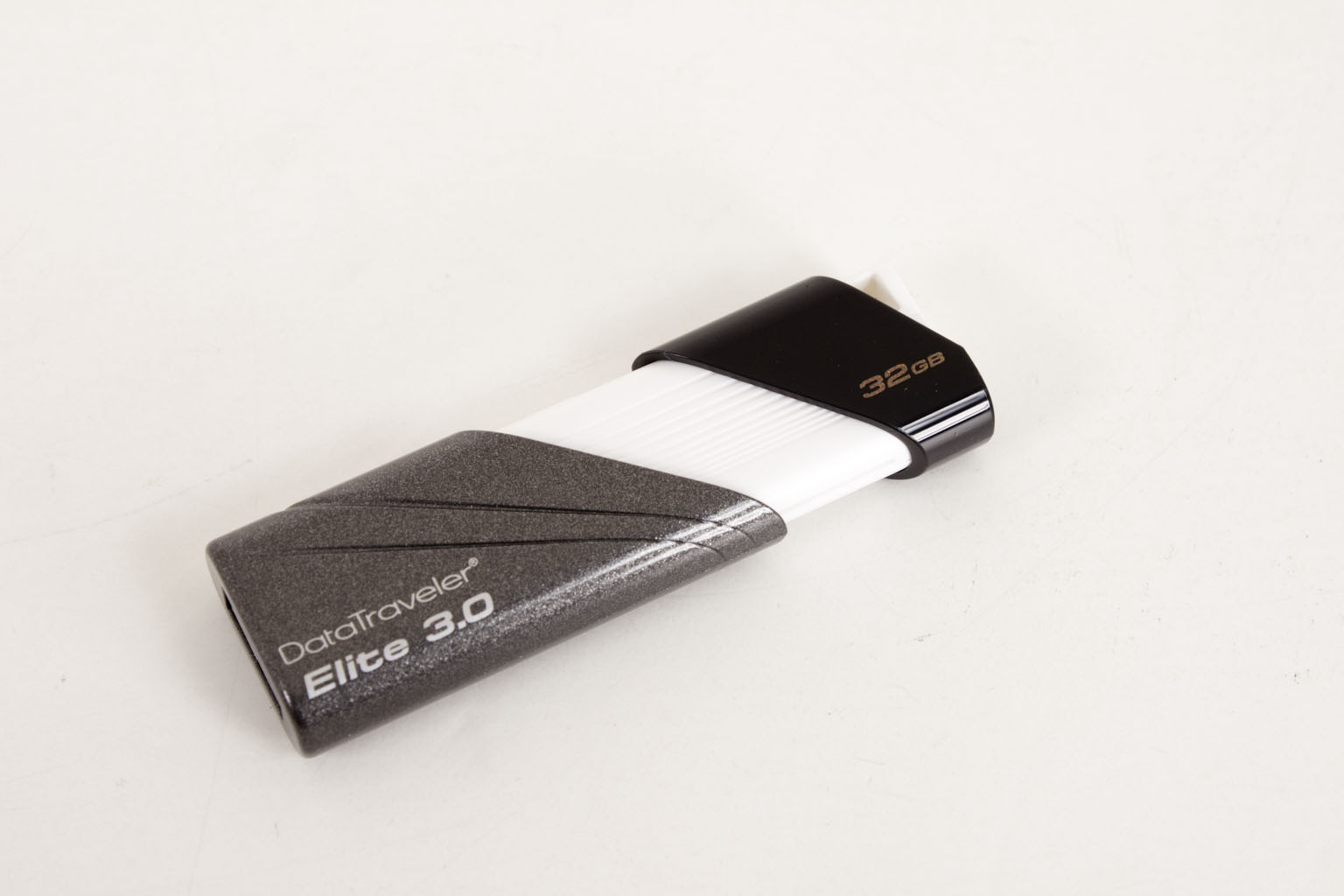 Although not as sexy as a new CPU, GPU or Motherboard USB flash drives are still used on an almost daily basis by many, many people. These are the indispensable little products that we carry our files around in. I know quite a few IT people that carry complete operating systems on them (I keep a Linux Live USB handy). It has also become increasingly popular to keep a web browser on a USB key to maintain better privacy (when combined with TOR). Now the problem is getting a USB key that has enough room and speed to keep things humming along so that these are extra steps are not slowing you down when you are working. We have gone through quite a few USB keys and are now taking a look at another one from Kingston; The DataTraveler Elite 3.0 32GB USB 3.0 Flash drive.
Although not as sexy as a new CPU, GPU or Motherboard USB flash drives are still used on an almost daily basis by many, many people. These are the indispensable little products that we carry our files around in. I know quite a few IT people that carry complete operating systems on them (I keep a Linux Live USB handy). It has also become increasingly popular to keep a web browser on a USB key to maintain better privacy (when combined with TOR). Now the problem is getting a USB key that has enough room and speed to keep things humming along so that these are extra steps are not slowing you down when you are working. We have gone through quite a few USB keys and are now taking a look at another one from Kingston; The DataTraveler Elite 3.0 32GB USB 3.0 Flash drive.
Kingston MobileLite G3 USB 3.0 Multi-Card Reader Review
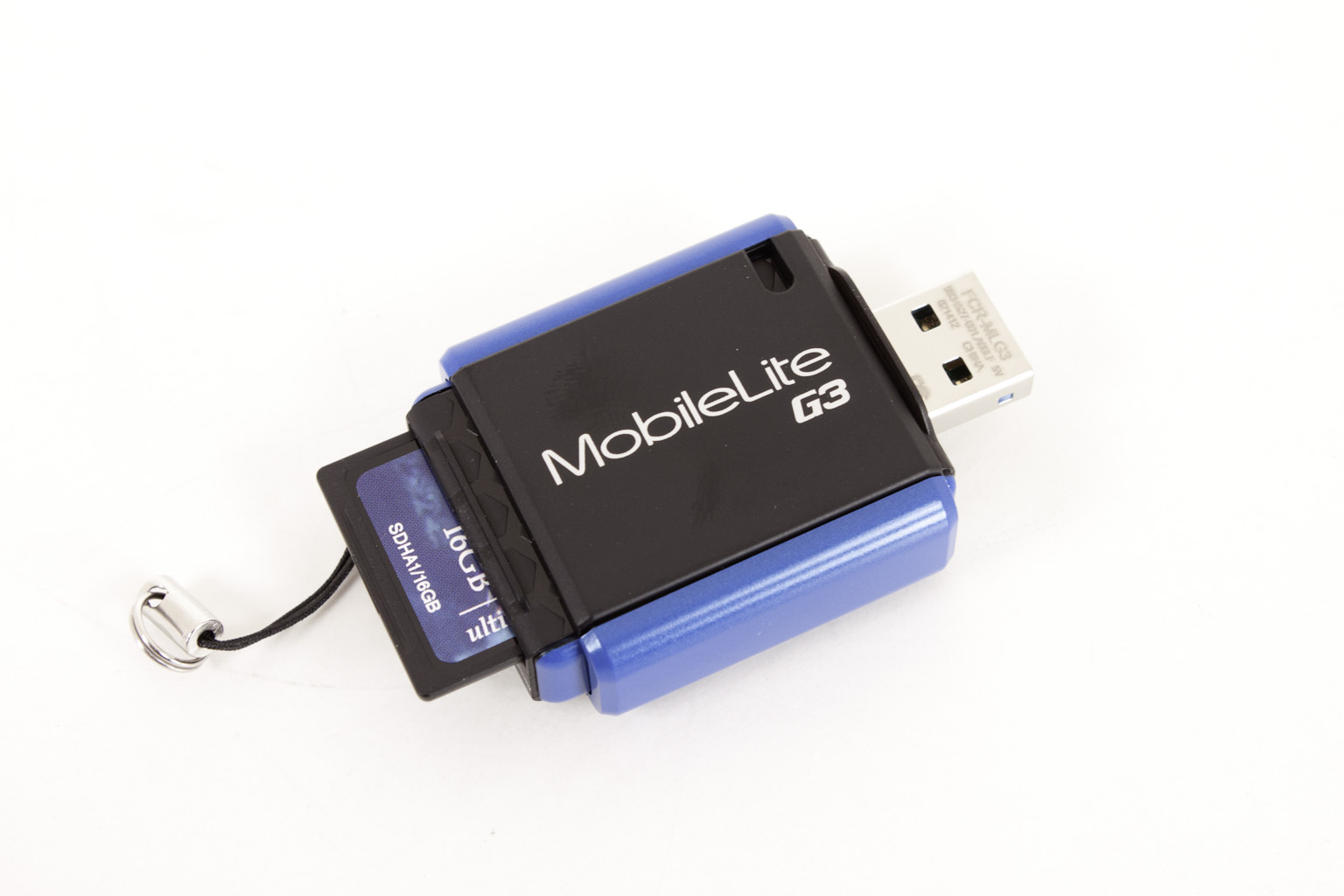 With the increasing popularity of the SD form factor for media storage (SDHC, SDXC, etc) in modern devices like Cameras, Camcorders and more it was no surprise to see many mobile devices built with an SD card reader. However, most desktop were left out as there is no spot on a motherboard to deal with this. So many photographers and videographers end up tethering their cameras to their systems just to get their images onto them for work. This is awkward and can be annoying. True there is an option for a multi-card reader, but many of those are slow or can be as bulky as the cameras were. With the release of the USB 3.0 specification and the rise of the case with USB 3.0 ports on the front it was time to revisit the multi-card reader. Today we have a small USB 3.0 multi-card reader from Kingston that is not much bigger than a USB flash drive. So follow along as we introduce you to the Kingston MobileLite G3 USB 3.0 Reader.
With the increasing popularity of the SD form factor for media storage (SDHC, SDXC, etc) in modern devices like Cameras, Camcorders and more it was no surprise to see many mobile devices built with an SD card reader. However, most desktop were left out as there is no spot on a motherboard to deal with this. So many photographers and videographers end up tethering their cameras to their systems just to get their images onto them for work. This is awkward and can be annoying. True there is an option for a multi-card reader, but many of those are slow or can be as bulky as the cameras were. With the release of the USB 3.0 specification and the rise of the case with USB 3.0 ports on the front it was time to revisit the multi-card reader. Today we have a small USB 3.0 multi-card reader from Kingston that is not much bigger than a USB flash drive. So follow along as we introduce you to the Kingston MobileLite G3 USB 3.0 Reader.
Kingston Updates The WiDrive With More Storage and Support for Android
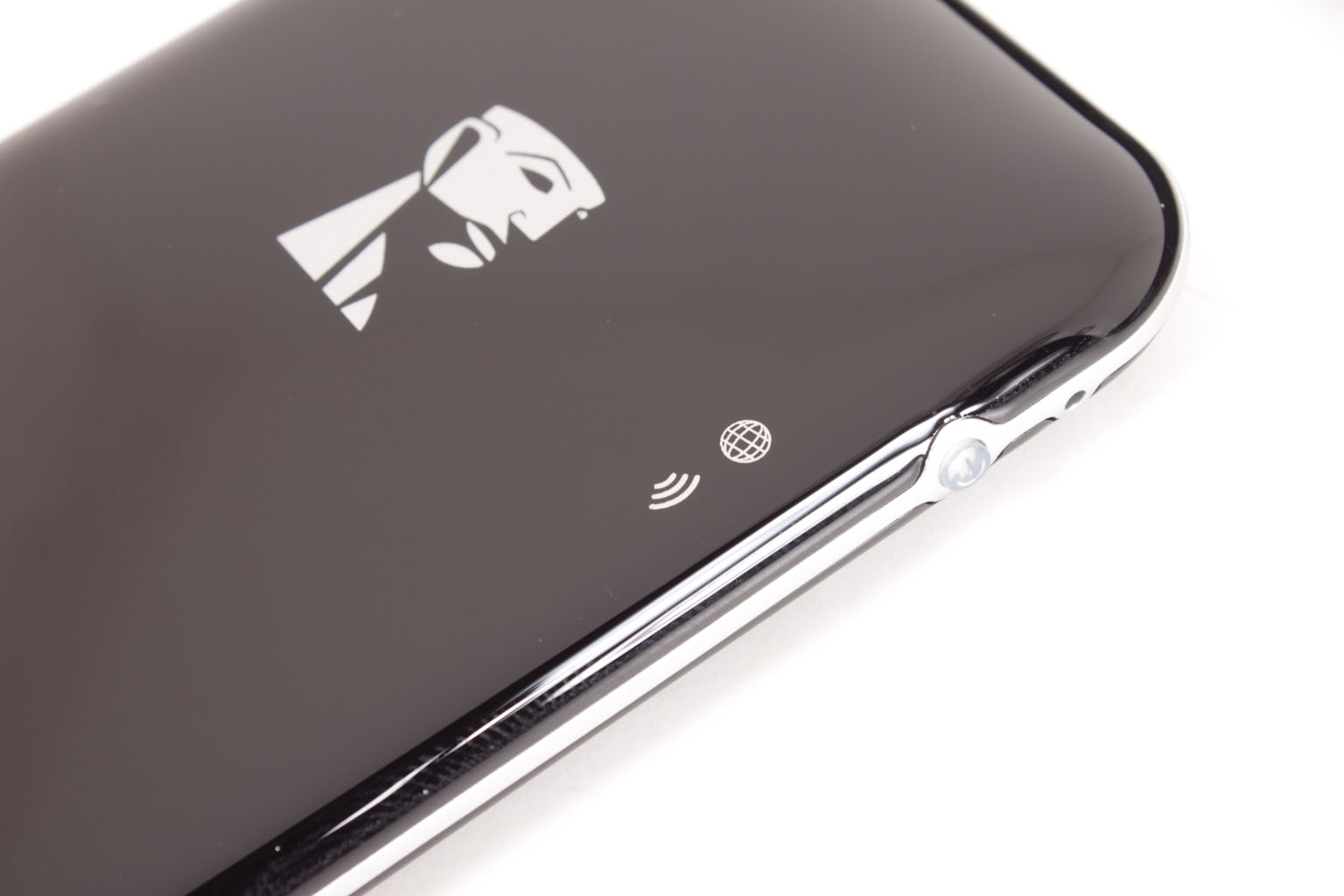 Kingston enjoyed some success with their WiDrive wireless storage device when it was launched and it is easy to see why. Who would not want 32GB of storage space to carry movies, music and other information in instead of clogging up your iPhone or iPad… The problem was that it was only for the iPhone, iPad and iPod Touch. This left many people a tad annoyed at Kingston for doing the WiDrive “Apple First”. Well Android users have another reason to be happy today. Along with a leaked version of Flipboard for Android we have news that Kingston is opening up their WiDrive to Google’s Android as well.
Kingston enjoyed some success with their WiDrive wireless storage device when it was launched and it is easy to see why. Who would not want 32GB of storage space to carry movies, music and other information in instead of clogging up your iPhone or iPad… The problem was that it was only for the iPhone, iPad and iPod Touch. This left many people a tad annoyed at Kingston for doing the WiDrive “Apple First”. Well Android users have another reason to be happy today. Along with a leaked version of Flipboard for Android we have news that Kingston is opening up their WiDrive to Google’s Android as well.
Kingston's HyperX 3K 240GB SSD Upgrade Kit Brings Capacity and Performance
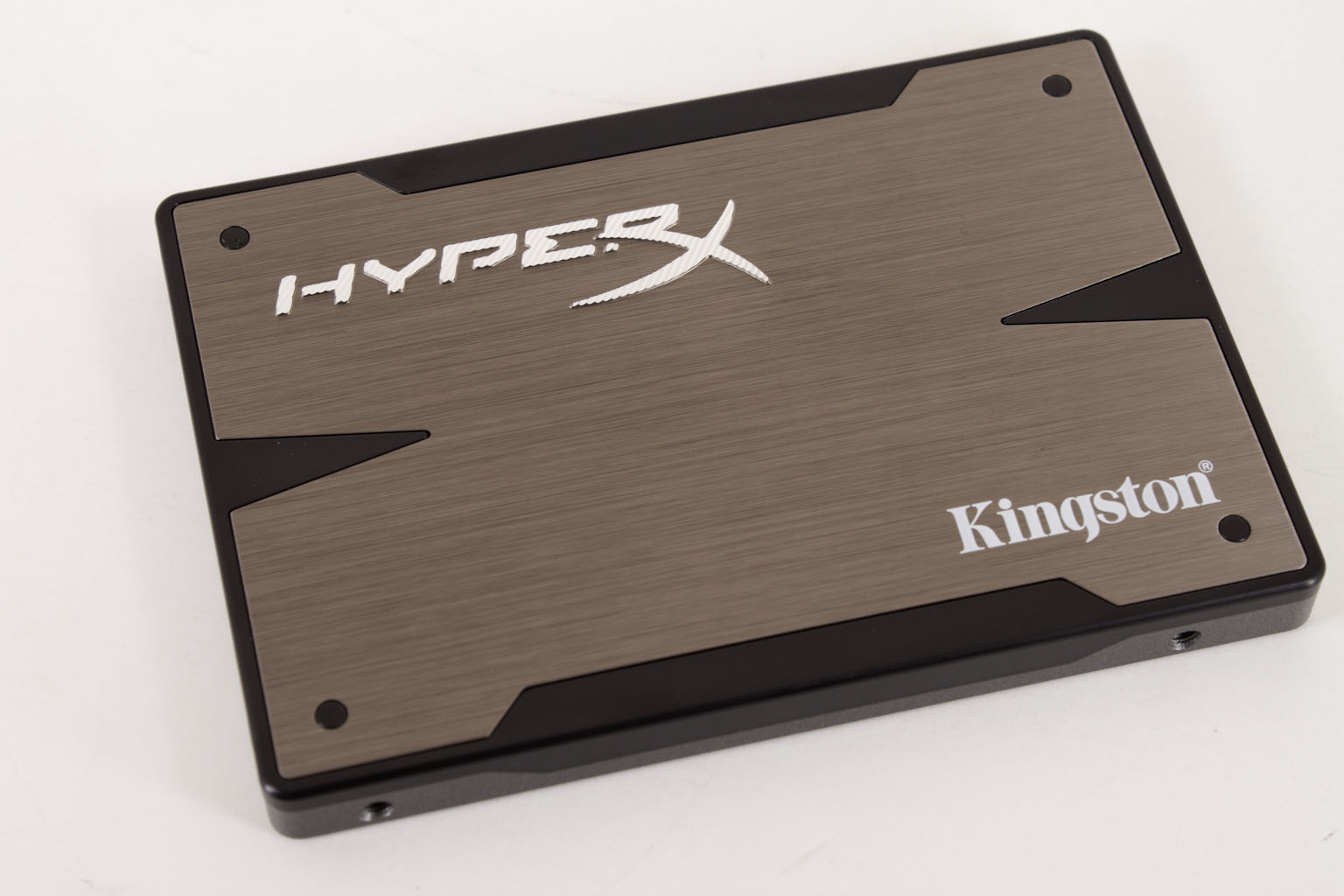 After our first run through with the Kingston HyperX SH100S3B 120GB SSD we had more than a few comments stating that 120GB was just not enough to work with. Although your typical 120GB drive is intended to be used as a boot drive with some basic applications installed on this drive it is not meant to be the only drive. Well people still did not want to hear about that so we managed to arrange to take a peek at Kingston’s next upgrade kit, the HyperX 3K 240GB upgrade kit which comes with a HyperX SH103S3 240GB SSD drive along with pretty much the same goodies you saw in the 120GB kit. So let’s take a quick look at what you have and then dive straight into performance.
After our first run through with the Kingston HyperX SH100S3B 120GB SSD we had more than a few comments stating that 120GB was just not enough to work with. Although your typical 120GB drive is intended to be used as a boot drive with some basic applications installed on this drive it is not meant to be the only drive. Well people still did not want to hear about that so we managed to arrange to take a peek at Kingston’s next upgrade kit, the HyperX 3K 240GB upgrade kit which comes with a HyperX SH103S3 240GB SSD drive along with pretty much the same goodies you saw in the 120GB kit. So let’s take a quick look at what you have and then dive straight into performance.
Kingston HyperX SH100S3B 120GB SSD Upgrade Kit Review
 Here at DecryptedTech we have always had covered a very wide range of products (as well as technologies). However, there is one item that we have never really gotten too deep into. This is direct attached storage and in particular Solid State Drives (SSDs). It is true that we do show you their performance in almost every motherboard review that we do here on the site, but we have never reviewed any SSDs exclusively. We have had many reasons for this not the last of which is there is still debate on how to properly test an SSD or HDD. While some feel that IOPs (Input Output Operations per Second) are key others want to know exactly how fast their data moves into and out of the drive. We sat down and have come up with what we hope is a good balance of synthetic and real world tests that will give you the best idea of how an SSD performs. So with that in mind we are going to dive into Kingston’s HyperX SH100S3B/120G 120GB Solid Sate Drive Upgrade Kit.
Here at DecryptedTech we have always had covered a very wide range of products (as well as technologies). However, there is one item that we have never really gotten too deep into. This is direct attached storage and in particular Solid State Drives (SSDs). It is true that we do show you their performance in almost every motherboard review that we do here on the site, but we have never reviewed any SSDs exclusively. We have had many reasons for this not the last of which is there is still debate on how to properly test an SSD or HDD. While some feel that IOPs (Input Output Operations per Second) are key others want to know exactly how fast their data moves into and out of the drive. We sat down and have come up with what we hope is a good balance of synthetic and real world tests that will give you the best idea of how an SSD performs. So with that in mind we are going to dive into Kingston’s HyperX SH100S3B/120G 120GB Solid Sate Drive Upgrade Kit.
Kingston at CES 2012; Memory, Flash, SSDs and Something Extra
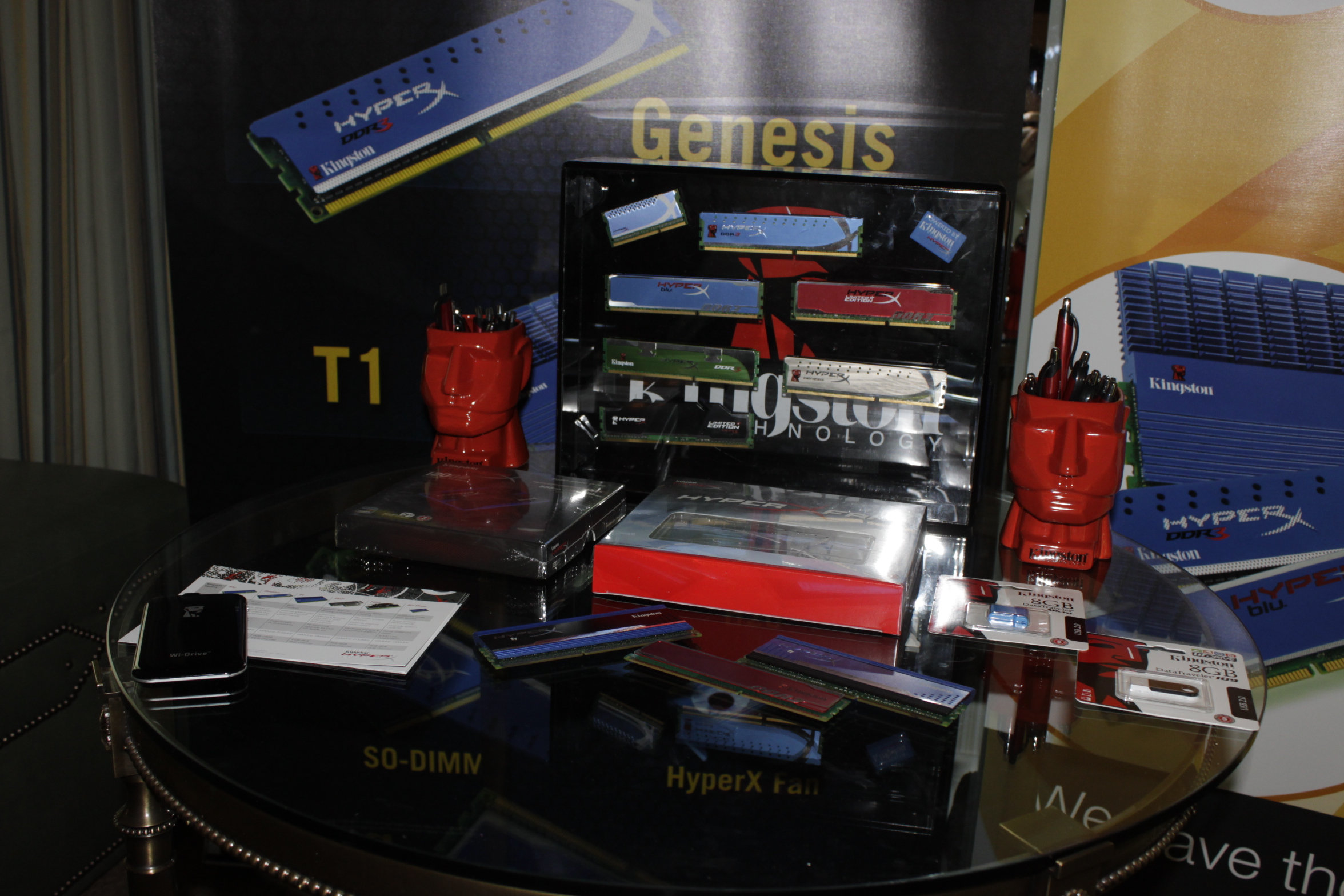
Kingston HyperX Achieves Highest Memory Frequency in Live Overclocking Session
Kingston HyperX Achieves Highest Memory Frequency in
Live Overclocking Session
HyperX Memory Achieves Top Speeds of 3600MHz (CL10),
3479MHz (CL9), 3275MHz (CL8)
Detailed information about the session is available online:
- Record validation 3600MHz (CL10)
- Record validation 3479MHz (CL9)
- Record validation 3275MHz (CL8)
- Photos of the session
Fountain Valley, CA -- December 12, 2011 -- Kingston Technology Company, Inc., the independent world leader in memory products, today announced that the Romanian overclocking team, Lab501, achieved three new world records with the world’s fastest dual channel memory kit, Kingston® HyperX® 2544MHz (Kingston part #: KHX2544C9D3T1FK2/2GX), during a live overclocking session.
Romainian OC Team Lab501Sets Three new World Records using Kingston RAM
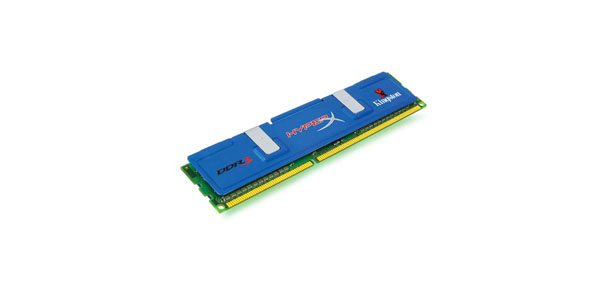 Kingston is in the news again for breaking world records. This time it was a team of three mad Romanian overclockers that pushed things over the limit. The kits used were all dual-channel (sorry no quad channel OC records… yet) and have a stated top clock of 2544MHz (the kits in question are the KHX2544C9D3T1FK2/2GX) with a CL of 9.
Kingston is in the news again for breaking world records. This time it was a team of three mad Romanian overclockers that pushed things over the limit. The kits used were all dual-channel (sorry no quad channel OC records… yet) and have a stated top clock of 2544MHz (the kits in question are the KHX2544C9D3T1FK2/2GX) with a CL of 9.
Kingston's DataTraveler HyperX 3.0 Zips Through the Lab
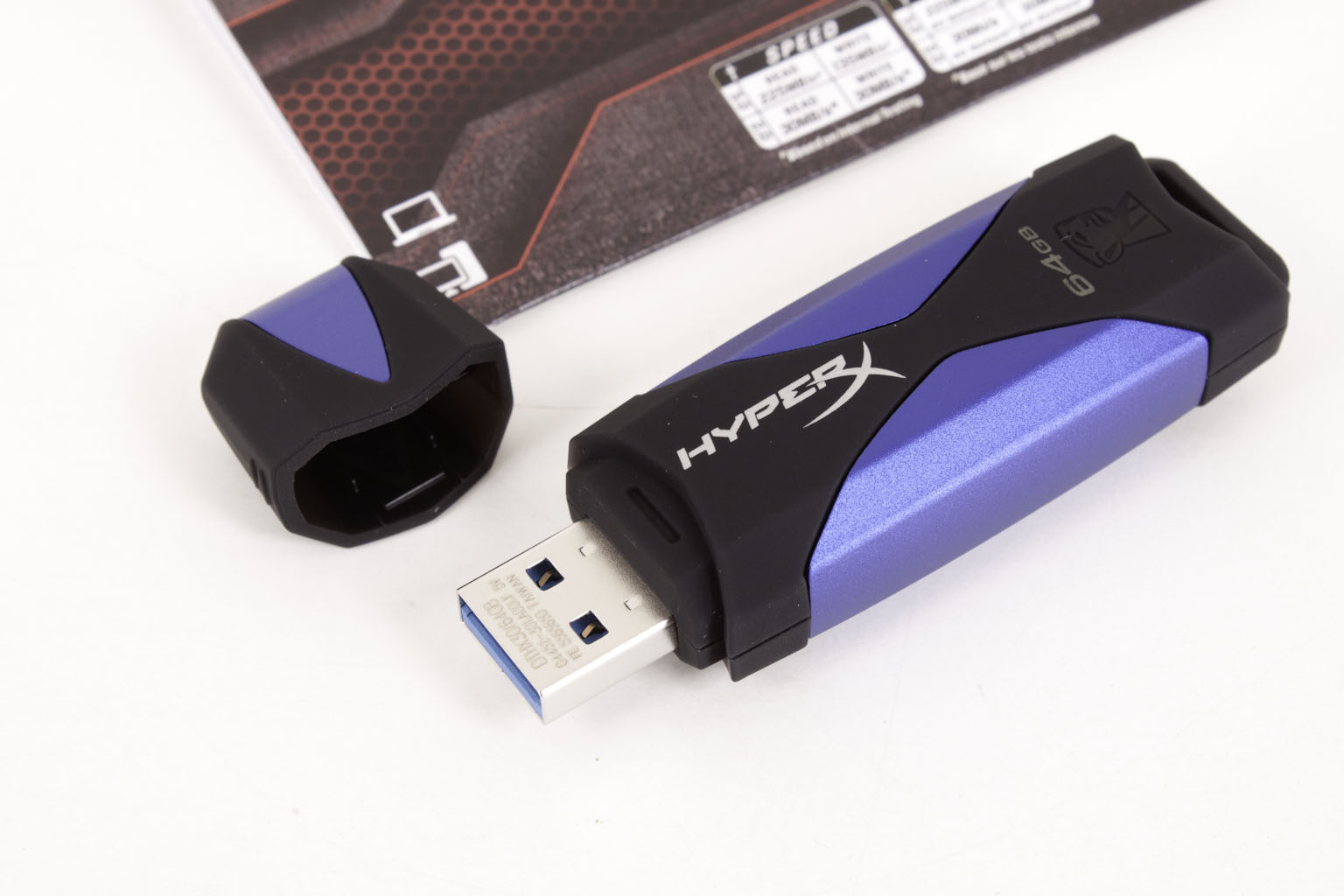 As the devices we carry around with us get smaller and smaller there is going to be an increasing want (or need) for larger and faster portable storage devices. We have watched over the last few years as the storage capacity of USB flash drives (Pen Drives, Thumb Drives etc.) has grown rapidly. It was not that long ago that a 1-2GB drive was something to have. Now we have small flash drives in the 64, 128 and even 256GB range! Kingston has been one of the companies on the forefront if this charge into larger capacity and faster performance. We have tested out multiple products from them from encrypted storage devices to the hefty DTUltimate G2 32GB USB3.0 thumb drive. Now we have a new product on the bench from Kingston. This one is being sold under their performance name HyperX. The Drive boasts 64GB of storage and 225MB/s of read performance! If the paper is to be believed this is almost twice the performance of the DTUltimate G2, which topped out at around 116MB in our testing. Let’s dive in and see if the paper claims match the real world performance.
As the devices we carry around with us get smaller and smaller there is going to be an increasing want (or need) for larger and faster portable storage devices. We have watched over the last few years as the storage capacity of USB flash drives (Pen Drives, Thumb Drives etc.) has grown rapidly. It was not that long ago that a 1-2GB drive was something to have. Now we have small flash drives in the 64, 128 and even 256GB range! Kingston has been one of the companies on the forefront if this charge into larger capacity and faster performance. We have tested out multiple products from them from encrypted storage devices to the hefty DTUltimate G2 32GB USB3.0 thumb drive. Now we have a new product on the bench from Kingston. This one is being sold under their performance name HyperX. The Drive boasts 64GB of storage and 225MB/s of read performance! If the paper is to be believed this is almost twice the performance of the DTUltimate G2, which topped out at around 116MB in our testing. Let’s dive in and see if the paper claims match the real world performance.
Kingston HyperX used to break two world records
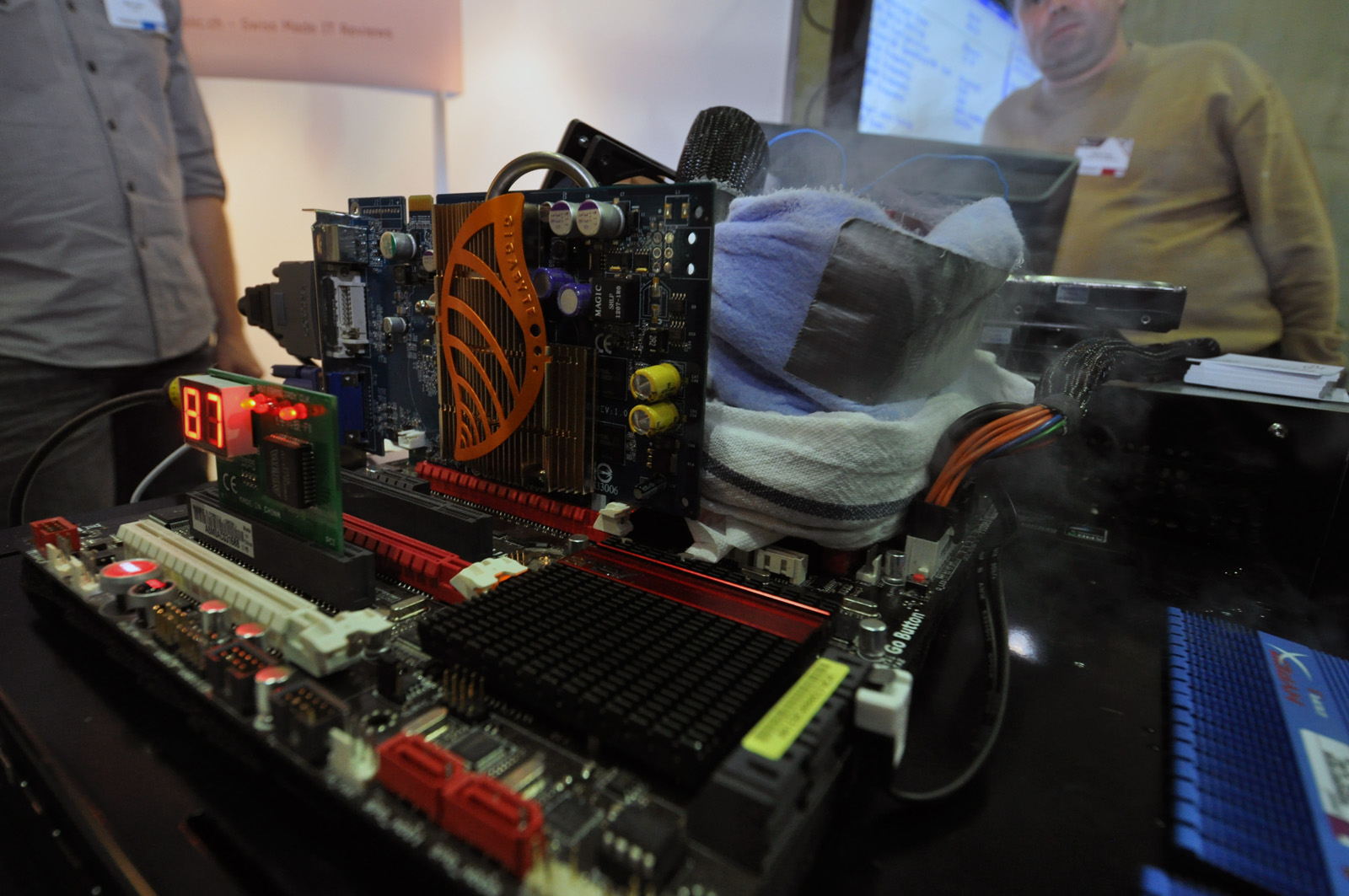 Just as AMD and Intel like to talk about how high their CPUs can run so memory manufacturers want to show off how fast their stuff can go too. Recently two Swiss overclockers from Ocaholic.ch managed to pull off a couple of world records. The memory kit that managed to pull of this feat was Kingston’s HyperX 2544MHz (part number KHX2544C9D3T1FK2/2GX). This is a pretty fast dual channel kit all on its own but once the voltage and the liquid nitrogen started flowing things heated up quickly.
Just as AMD and Intel like to talk about how high their CPUs can run so memory manufacturers want to show off how fast their stuff can go too. Recently two Swiss overclockers from Ocaholic.ch managed to pull off a couple of world records. The memory kit that managed to pull of this feat was Kingston’s HyperX 2544MHz (part number KHX2544C9D3T1FK2/2GX). This is a pretty fast dual channel kit all on its own but once the voltage and the liquid nitrogen started flowing things heated up quickly.
The first world record was a blistering 3095 MHz at the low latency of CL6 set by Roger Tanner aka "splmann" and Marc Voser aka "Besi,". Tthis for those of you that are not familiar with what the CL number stands for let me explain a little. CL stands for Column Address Strobe Latency (sometimes referred to as CAS) it is represented by a number usually between 1 and 20. The number represents the amount of time between when the memory controller asks the memory to access a particular memory column and the time it is available for output; the lower the number the better.
When memory was slower it was easy to get a lower latency and make sure that the data was consistent. Now that we are hitting much higher frequencies and the memory controllers are on the CPU (and running at the same speed there too) it is becoming harder to keep these numbers low. This is what makes running memory at 3095MHz with a CL of only 6 so impressive. Right behind this feat was another record setting run, this time the CL was only 8 but the frequency went up a bit to 3175MHz.
Now while all of this was done with regular memory modules the amount of voltage used required some extra cooling. After all you can bet that they were not running the stock 1.5 volts through these modules to get the speeds they were reaching. So to keep things cool the HyperX modules were put into an aluminum and copper basin which was then filled with Liquid Nitrogen, just to keep things fun.
You can check out the pictures of the event over here
Validation for the 3095 CL6 run
Validation for the 3175 CL8 run
Source OCaholic.ch and Kingston
Discuss in our Forum
